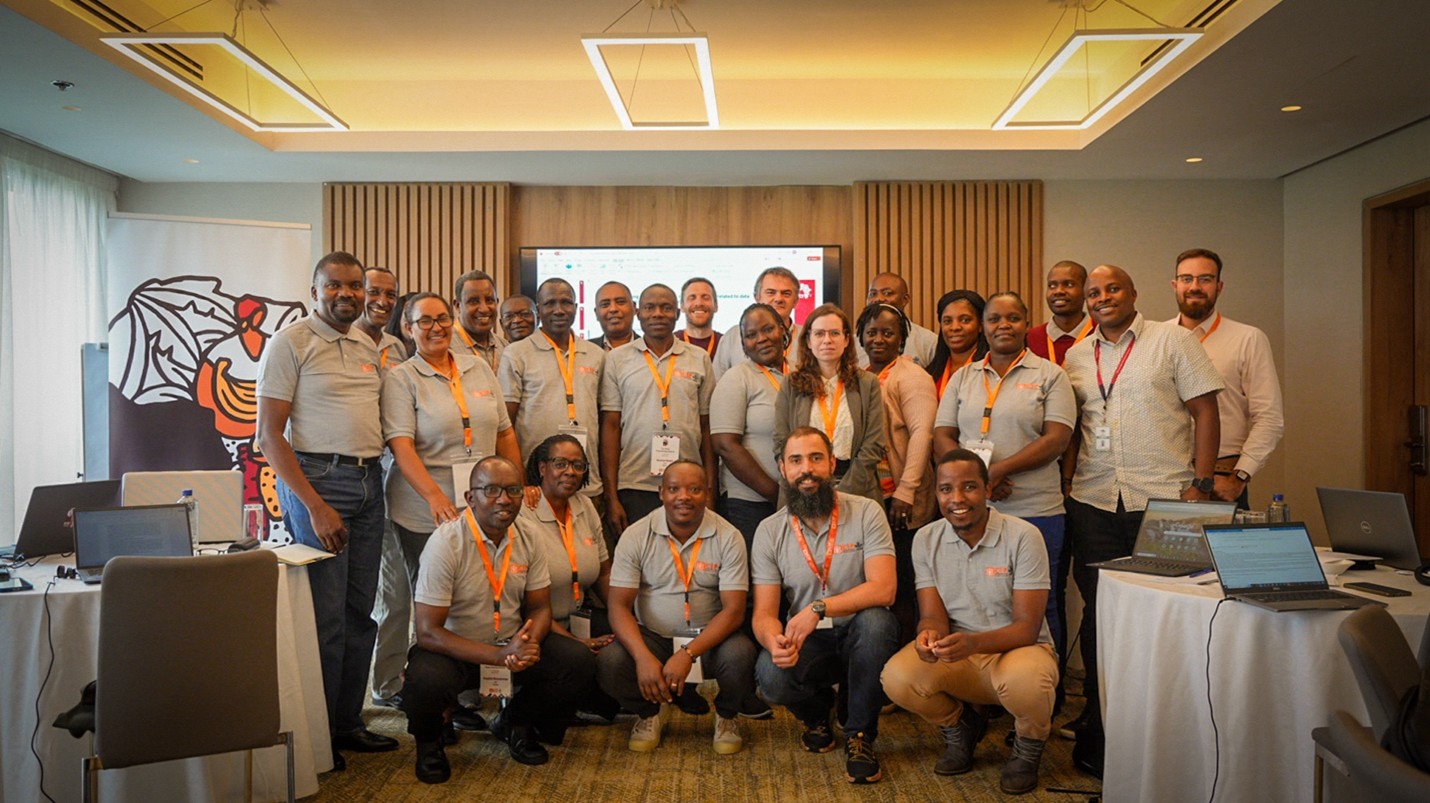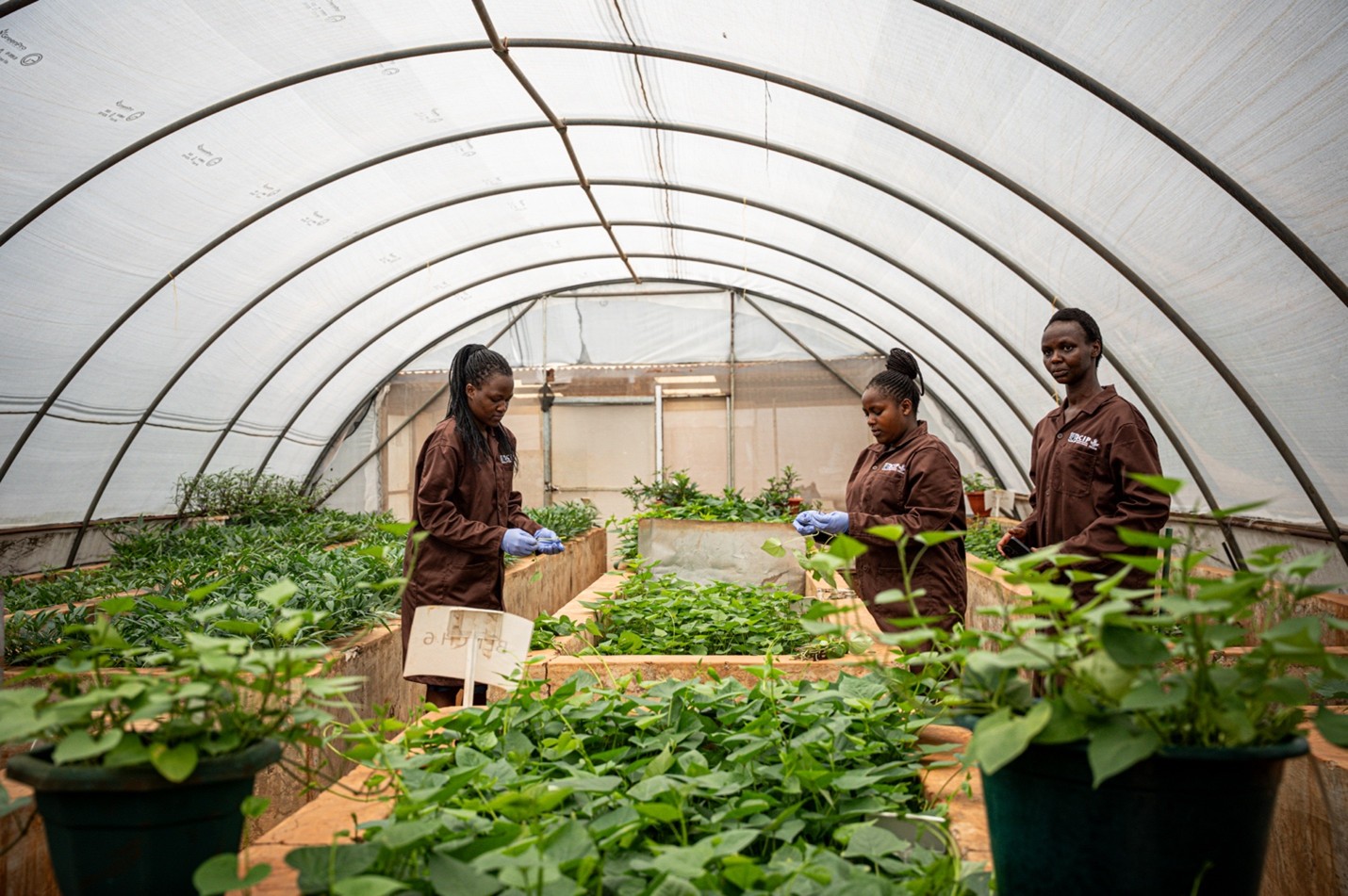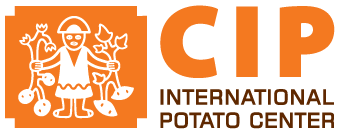Interview with Thiago Mendes (CIP) by Stefan Möhl (CIP)

Africa’s holds significant opportunities for agriculture, particularly potato and other tuber crops farming. However, limited investment in breeding has constrained the crop’s potential on the continent. Thiago Mendes (Ph.D.), a lead breeder at the International Potato Center (CIP) in Nairobi, aims to change that especially for potato. He believes the region needs to become more attractive to donors—and one of his solutions is the East African Potato Breeding Network, a framework that integrates various breeding efforts across the region. On a sunny November day in Nairobi, I sat down with him to discuss how such a network could also help attract much-needed funding.
CIP: What motivated you to start this breeding network?
Thiago Mendes: Before joining CIP, I worked as a sugarcane breeder in the central part of Brazil, managing a large program with over 50 hectares trials annually. When I arrived here in 2017, I was struck by the small scale of potato trials—not even a full hectare. That raised a key question: how could we scale up potato breeding?
Expanding in a single country wasn’t viable due to market size. Instead, we saw an opportunity—connecting breeding efforts across the region. So we started to connect the different NARS (National Agricultural Research orgnisations) across East Africa and started a breeding network that is really open to anyone intersted to join. I believe by enhancing our collaboration, as well as multiplying and diversifying trials, we also make a stronger case for donors to invest in breeding in Africa. donor investment.
Around the same time, CGIAR initiatives like Excellence in Breeding and Accelerate Breeding helped streamline strategies around a market-driven approach, which we adopted in our network.
CIP: Coming from a commercial breeding background, did you immediately think about scaling up and making breeding more cost-effective?
Thiago Mendes: Absolutely. Networking with NARS is key—by pooling resources, we can target different market segments and test on a much larger scale, driving genetic gains. Take potato breeding: the first generation involves thousands of genotypes, which can be shared across countries. But by collaborating across countries and using tools like genotyping and phenotyping, we expand our reach and impact. It’s also about knowledge sharing. A variety bred for processing in Ethiopia might be just as valuable in Kenya. The network isn’t just about sharing genotypes (potential varieties)—it’s about exchanging expertise, methodologies, and best practices.
Breeding is a numbers game. Scaling up trials increases the chances of success. Through statistical models and genomic tools, we connect efforts across East Africa expanding to Nigeria in West Africa—sharing data, insights, and resources. Instead of each country investing heavily on its own, the network enables a coordinated, efficient approach that aligns breeding goals with market needs.

CIP: What is CIP’s role in the network now?
Thiago Mendes: CIP’s role is to keep the network functional and evolving long-term. One of our biggest contributions is ensuring collaboration stays strong. The network works because each country brings its strengths—some excel in data collection, others in statistical analysis. Instead of working in silos, we complement each other. If one partner advances in digital tools, they can train others, reducing dependence on external support.
We’re in a much stronger position than a decade ago, with more geneticists and breeders (specialists working on selection of new improved varieties) in the system. Challenges remain, like training the next generation, but this network has made collaboration possible at a level we couldn’t achieve before. And as potatoes gain more importance in the region, investment in structured breeding has increased. Although potatoes have not yet received as much attention for breeding in Africa as other Root, Tuber and banana (RTB) crops. It’s crucial crop for the tropical highlands in Africa, with much more potential to be explored thought breeding.
CIP: So you’re saying CIP is becoming more of a regional connector—bringing stakeholders together rather than doing all the breeding itself. Is this a redefinition of CIP’s identity? And could this be a model for other crops?
Thiago Mendes: Yes, and other CGIAR crop programs are moving in this direction. Cereals, for example, already operate in networks, though it’s easier with seed-propagated crops. For potatoes, which rely on vegetative propagation, cross-border collaboration is trickier.
But you’re right—this is a shift. National agricultural research organisations now have stronger capacity than before, so CIP’s role is evolving. Instead of competing for resources, we’re focusing on strengthening partnerships and building capacity.
If we worked the same way we did 20 years ago, we’d be holding back progress. We need to adapt, collaborate better, and avoid outdated models. But there’s no single formula—success depends on strong relationships, engagement, and long-term investment.
And even with shared resources, potato breeding requires significant funding. That’s why private sector involvement is crucial. The goal is to build a system that attracts investment by showing clear returns.
CIP: Do CIP and CGIAR need a mindset shift to fully embrace this approach?
Thiago Mendes: Yes! We can’t be afraid of change. We need to rethink how we collaborate and be open to new, even unconventional, ideas—if they’re sustainable. Listening is key. We need to spend more time in the field, understanding local realities. Our work mapping market segments has been hugely valuable—it clarified what traits we should breed for. But we need to go further: be more transparent, listen more, and embrace change.
CIP: What is the potential of potato in Africa?
Thiago Mendes: You can see the interest growing—more land is going into potato cultivation, and the private sector is getting involved. Companies wouldn’t be investing in hybrid breeding and new varieties if they didn’t see real market potential. There’s still a lot of room to grow, especially in Tanzania and Ethiopia, where suitable land for potato is large. A stronger value chain could really boost the sector. And while private investment is increasing, public support is still key. CIP’s germplasm, bred for tropical conditions is making a big difference for smallholder farmers and can do much more facing the current and future changes on climate, use of the soil, urbanization and others.
At the same time technological developments are great opportunities for us. For example, we have a strategic partnership with HZPC on hybrid potatoes. In biofortification, we just released two varieties of Iron and zinc enriched potatoes that we also want to adapt to Africa. It’s about continuously evolving our approach.
CIP: Let’s talk about funding. What’s your strongest pitch to bring investors on board?
Thiago Mendes: Investing in the network ensures better coordination and maximizes returns. Funders often focus on single countries, which is fine—we can leverage that. But if they want broader impact, the network is the way to go and CIP is prepared to support the local partners. Investing in a regional system on projects co-created by CIP/CGIAR and countries and regional partners means money is spent where it’s most needed. It enables collaboration, knowledge-sharing, and smarter resource allocation—whether upgrading research facilities, field equipment, or improving working conditions for staff leading to a sustainable breeding program for the region, and therefore good potato varieties
CIP: That’s a great headline—”More return on the dollar invested.”
Thiago Mendes: Exactly!
